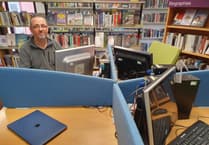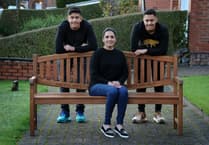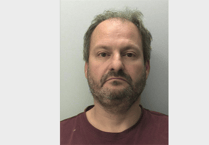A TOTAL of 73 people came to the October 19 Crediton u3a meeting to discover why there is a memorial plaque in the Fingle Bridge locale to Dr Sigfreid Marian (SM).
Tim Harrold gave us an informative and entertaining history about the man to whom the plaque is dedicated.
At Copples Corner which is at the bottom of the hill from Drewsteignton, there is a gate. To the right of the gate there is an oak tree, the plaque will be found in this vicinity.
It is dedicated to Dr Sigfreid Marian (1898-1952) who worked as a soil scientist, investigating charcoal. Tim said he had never heard of this man, so he set about finding out, which led to some interesting connections with Crediton.
But who was he and what did he do? Dr Marian was an Austrian Chemist, who came to this country as a Jewish refugee in 1938. Initially, he was interned along with many other “enemy aliens“ but eventually the government found a use for his skills, and he was put to work supervising the production of charcoal on Dartmoor.
Tim researched through “Soil Science” Publication and Universities worldwide without any luck.
After speaking with a friend, Tim received a telephone call from a Mr Treen in Colorado, USA.
The caller was the brother of Mr Treen of Treen’s motorbikes in Crediton!
He was able to tell Tim some minor details about SM because they (when children) had lived above Clifford Bridge which is very close by what was then “Teign Gorge Charcoal” (owned by Dartington Woodlands/Estates).
SM rented land from Dartington Estate (£5 per acre), where he produced charcoal on which he carried out experiments.
He did all this from a house in Exeter, 24 Union Road to be exact; he also produced a 32-page monthly publication then called “Soil Magazine”.
This magazine ran from 1949 until 1955, although SM had died in 1952 his “followers” continued with the publication.
It had worldwide interest and support. However, Dartington had a less positive view disassociating itself from SM.
Found in a letter from Dartington Woodlands’ William Hiley’s (Manager) letter to Viscount Newport “he is a pretentious and rather unveracious advertiser and we are not quite happy about our relationship with him.” Viscount Newport “Marian’s advertising claims somewhat specious”.
In World War Two “Teign Gorge Charcoal” (Dartington Woodlands) was requisitioned for war materials.
Charcoal was required for metal working, making synthetic materials and case metal hardening as well as explosives. Charcoal was then £140 a ton.
SM was born in North Romania near Ukraine, he was called up for service in World War Two and found himself in an artillery unit. His abilities were recognised by a chemistry professor (also in the same unit) who advised him to follow the chemistry pathway after the war.
This he did, eventually publishing with Haber about agricultural fertiliser. (Haber unfortunately were involved with chemical warfare products used in Flanders in World War One). He produced “Actumus” a wonder manure and M203 his super-medicine that cures everything from mouth ulcers to cancer.
SM advertised that he had 40 different products for sale. Tim told us about the pros and cons of SM products and the reviews of SM’s claims by scientific journals and the like. S Burman (Soil Association’s Mother Earth 1948 - 50) “He produces, however, no experimental evidence to support this claim.”
A Mr JG Manners asks SM eight questions, the final one being “Are there controlled experiments?”
Answers by SM were largely evasive or inadequate. There were comments by research chemists and biologists: “The least evidence based article I have ever read.” - “None of this would get past scientific peer reviewing.”
There was an article in a national newspaper (“The People”) about SM some long time ago (approx. 1946 - 52) “His fertiliser discovery is bunk”, “Throw it all away, Doctor!”.
There is also a picture of SM alongside it.
But last decade’s (2010-) interest in biochar as a soil amendment, storing carbon and perhaps improving yields and plant health is a vindication?
Sandra Ragalsky
for Crediton and district u3a




